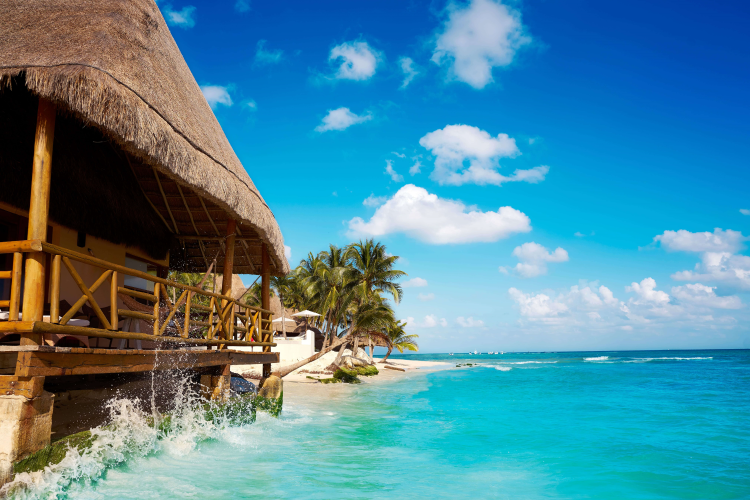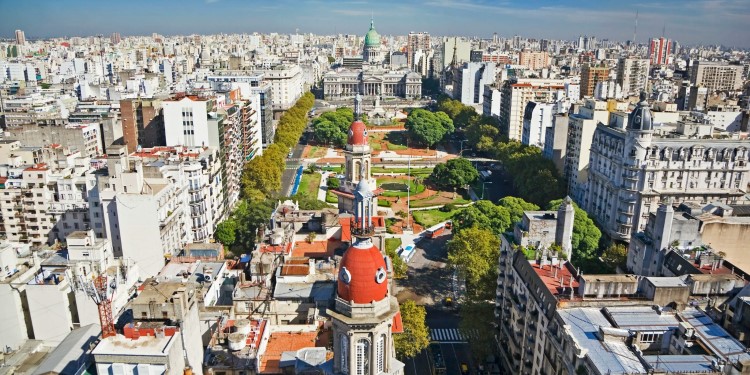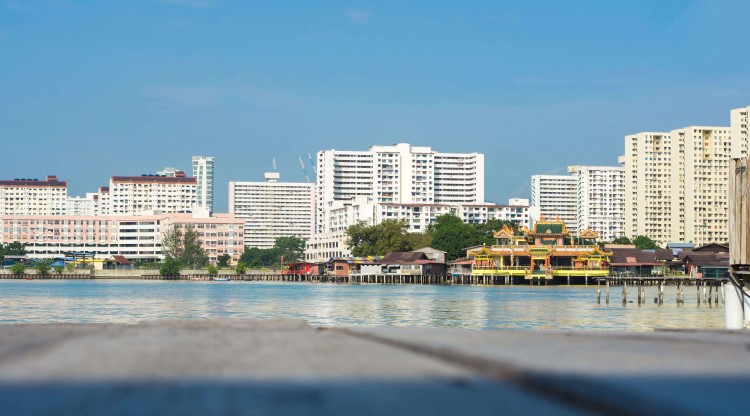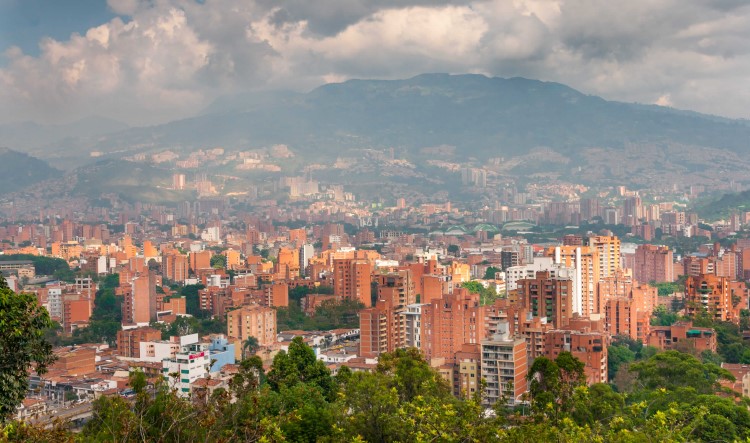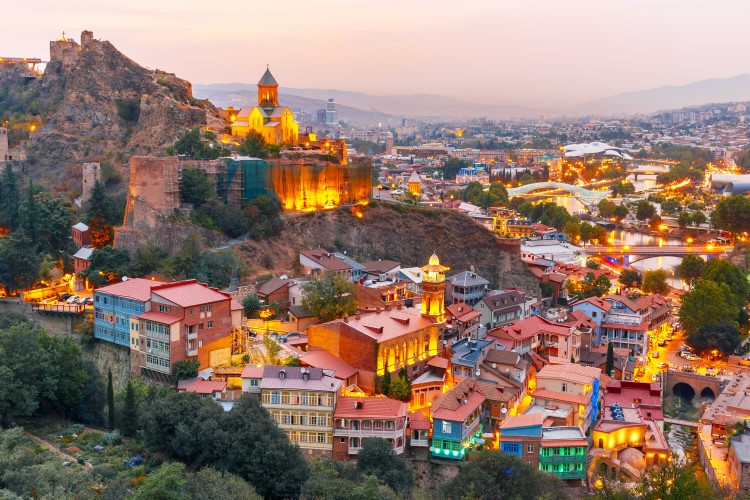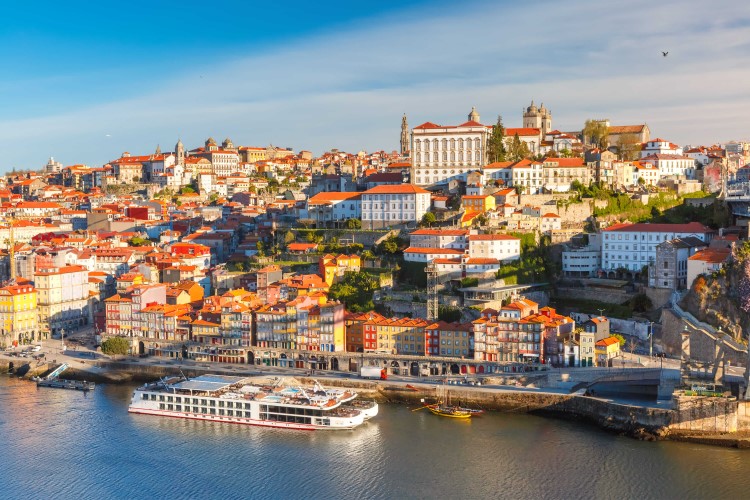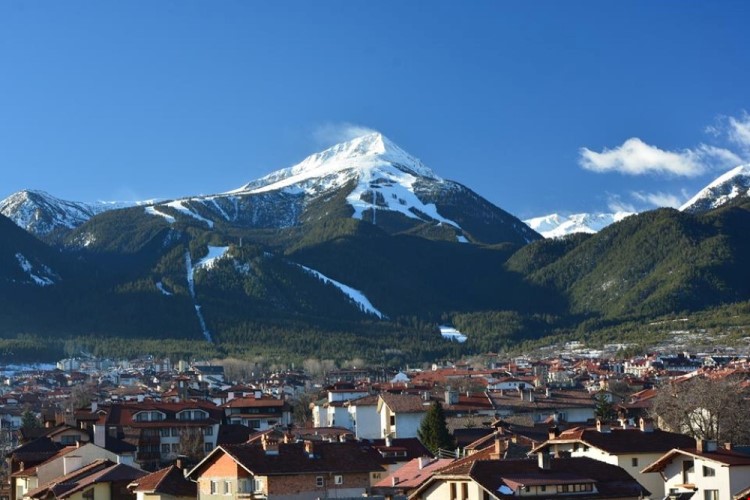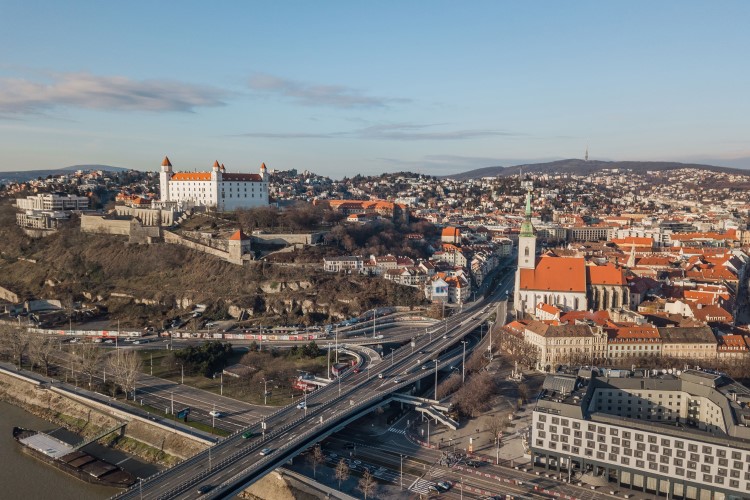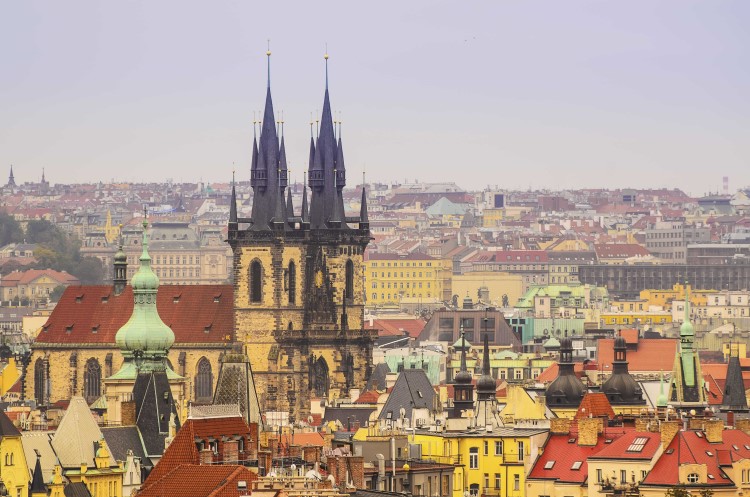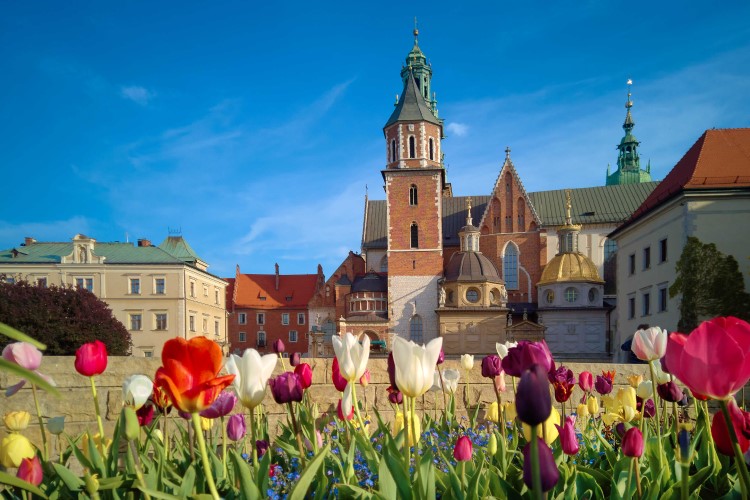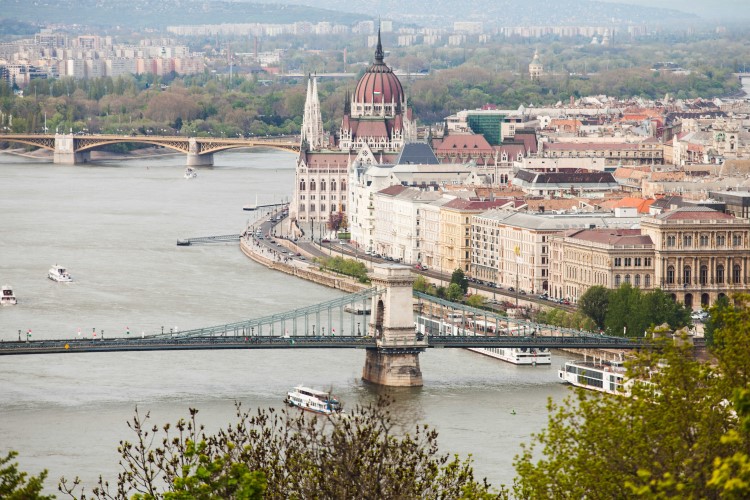This may sound like a dramatic life choice, but many opt for a freelance lifestyle where they can join fellow nomads and see the world. With a rise in remote workers and digital nomadism, exploring whilst working is becoming the new normal. Find your Wi-Fi tribe in one of these amazing locations! Keep on reading to explore the best digital nomad destinations!
What Makes a Great Digital Nomad Destination?
When choosing a destination to work and live in, what should you be on the lookout for? Here are some of the key features to consider when finding your next digital nomad location:
Good internet access – is probably the most important factor! Popularity with other digital nomads Safety Good entertainment and a friendly atmosphere A visa that you can renew if you want to stay A climate that’s agreeable to your personal taste
Whilst some of these factors will differ from nomad to nomad, others like safety will be important for all travelers. Bear these factors in mind when researching cities to ensure you pick the right location for you!
Best Places to Live as a Digital Nomad 2023
If you aren’t sure where to start researching, don’t worry! We’ve researched the most popular digital nomad cities, as well as some up-and-coming options too. In each description, you’ll find the advantages and disadvantages of each city alongside some of the best things to do there. This is an all-encompassing list for any new digital nomads or seasoned nomads looking for their next home!
1. Chiang Mai, Thailand
Chaing Mai is one of the most popular digital nomad cities right now. As there is such a large population of nomads there are many coworking spaces, cafes with free Wi-Fi, and other amenities that have started to pop up more frequently too. If you’re starting as a digital nomad this is perfect, as you won’t be far from other travelers.
As a city, Chiang Mai is known for being relaxed and friendly. The city also boasts a great reputation for Thai food and has many vegan options too. If you want to explore on the weekends, there are many mountains, lakes, and sacred temples to visit not far from the city. The temperature is milder than in Bangkok, which can make living easier for some that aren’t from warmer areas. Visa options are great for foreigners and this digital nomad hub is particularly safe compared to other cities nomads choose to live in. Aside from general tourist traps (like pickpockets or hustlers at markets), this city is safe to live in if you are sensible. Transport is readily available and the cost of living is very low too. Some may not want to live in Chiang Mai due to pollution and the language barrier. Unless you speak Thai, it may be hard to navigate the country as it’s rare for locals to speak English fluently.
2. Playa del Carmen, México
Mexico is a popular location for digital nomads as it has a tropical atmosphere and friendly locals. One of the most popular areas is Playa Del Carmen on the Yucatan Peninsula. This area has great connections, a lively digital nomad scene, and beautiful beaches too.
Most travelers can stay for up to 180 days in Mexico without a visa, but when traveling into the country border forces sometimes stamp 30, 60, or even 90 days on your passport. If you want to stay longer you may need to contact local immigration offices or show proof of onward travel. Digital nomads can easily find Wi-Fi in the Playa Del Carmen area, it may not always be the fastest but the speed is usually around 10 Mbps and coworking spaces can offer higher speeds too. It’s common for digital nomads to live in hostels here or Airbnb accommodations and rooms for rent. When you’re not working you can explore the many diving opportunities in sinkholes in the local tropical rainforest Cenote Chaak Tun. You can also visit Tulum and visit Mayan ruins, cabanas, and urban areas. Nomads must note that these areas can get busy in tourist seasons and food can be more expensive too. As far as digital nomad destinations go, this area is well-connected and perfect for a remote worker.
3. Buenos Aires, Argentina
Buenos Aires is one of the most popular digital nomad destinations due to its vibrant culture and lively nightlife. With a lower cost of living and strong local culture, this is an ideal city for any digital nomad that wants to learn Spanish or meet locals instead of staying in a nomad bubble.
There are many co-working and co-living spaces within the city, these usually offer fast Wi-Fi and a community of like-minded travelers to befriend. Popular neighborhoods for these include Palermo, a great stop for travelers to get used to the busy city. Standard internet speeds here are 16 Mbps and there’s free access in cafes and some public spaces too. When you’re not working there’s a lot to do and see in Buenos Aires! Nomads can learn to tango, visit the iconic Recoleta Cemetery, and enjoy the wild nightlife. Buenos Aires has cheap public transport, a low cost of living, and friendly locals. A perfect city for any digital nomad that wants to live somewhere lively. Just note that there is a lot of petty crime here, so be on the lookout for pickpockets and keep your belongings safe when in busy spaces. If you’re interested in Buenos Aires, note that most digital nomads get visa-free entry to Argentina for 90 days, however, if you want to stay longer you’ll need to go in and out of the country to get a new entry stamp. You could also apply for visa extensions (also known as prorroga) too. It’s common for nomads to stay longer than 90 days and pay a moderate airport fine as the process can be lengthy.
4. Penang, Malaysia
Known for its amazing street food, beautiful architecture, and status as a UNESCO World Heritage location, Penang is becoming more and more popular for nomadic lifestyles. This remote working destination gives a relaxed island feel whilst still being a developed city – the best of both worlds!
When you arrive in Penang, you’ll get a 3-month visa on arrival (depending on your nationality). If needed, it’s easy to do “visa runs” into close countries like Thailand and Singapore to avoid visa fees. Many travelers use cheap transport like Air Asia to complete these trips. Penang is considered to be a safe city, but tourists must always be aware of their belongings as muggings and theft are common. Gurney is one of the most popular areas to live in Penang as it has lots of accommodation options and it’s close to Georgetown (the Unesco site). Many travelers opt for Airbnb instead of local real estate agents for short-term accommodation as this is easier to arrange. It’s common for local landlords to not accept tenants for less than 6 months and some will only accept you for 12 months minimum. Penang is an up-and-coming location, not just because of the great digital nomad infrastructure, but because of the many things to do and see on the weekends. If you’re a fan of hiking you’ll be living close to the Penang National Park which offers jungle trails and great views. You’ll also be living close to beaches and the UNESCO world heritage zone, so you’ll never be bored on a day off!
5. Medellin, Colombia
One of the most popular digital nomad destinations these days is Medellin, Colombia. This city is nicknamed “the city of eternal spring” because of its constant great weather and lack of humidity. Compared to the country’s capital city Bogota, Medellin has a relaxed, hipster vibe – perfect for the nomadic mindset. This is one of the best places to be a digital nomad in the world!
Colombia has great visa options, with most travelers getting a tourist visa on entry which guarantees them a visa-free stay for 90 days. Sometimes boarders will want to see proof of onward travel, so bear this in mind if you’re going in and out of the country a lot. Some digital nomads are wary of Colombia because of the country’s reputation, however, this city is relatively safe to live in. Just make sure to apply your usual principles and don’t walk around drunk or with your belongings out as this can draw attention to you. The most popular neighborhood for digital nomads is El Poblado. Within this area, you can find hostels, hotels, and lots of ex-pats. This is also a great option for any travelers who like to party, as the nearby Parque Lleras has the best nightlife in the city. Other popular places to find accommodation include Laureles and La Candelaria. Airbnbs are the most popular form of digital nomads here, as you can get a great apartment for a low cost. There are many activities to do and places to see in this beautiful city, including the Museo de Antioquia, Plaza Botero, Jardin Botanico, El Centro, and Parque Arvi. Nomads can also visit authentic coffee farms a short journey from the city for a taste of Colombia’s goodness. You can also visit the popular town Guatape to visit their giant rock “El Penon” and take a dip in the beautiful lakes. Another popular activity is Comuna 13, a neighborhood that was once considered one of the most dangerous areas in the world but now it’s safe for tours – just don’t stay here after dark!
6. Guanacaste, Costa Rica
Costa Rica may not be as cheap as other nomad destinations, but the tropical weather, laid-back life, and Pura Vida mindset are more than enough for some nomads!
A common perk to this country is the proximity to the U.S. and Canada, allowing remote workers to be close to home and still enjoy the nomadic lifestyle. If you’ve not traveled before, this is a great option for a first stop. One of the most popular provinces to stay in is Guanacaste, on the east coast of the country. A popular spot within Guanacaste is Tamarindo, a lively town with a surfing culture and good nightlife. In this area, you’ll find lots of restaurants, ex-pats, a local airport, and modern accommodation. Some of the drawbacks of staying in Guanacaste include slower internet speeds, lack of local culture as there are many nomads, and expensive rents. If you aren’t bothered about integrating into local culture, this location could work for you as the majority of people here are English speakers – but this is off-putting to some. Costa Rica boasts some of the most beautiful views in the world. With a mix of thick jungles, Caribbean beaches, and gorgeous sunsets, you can understand why many want to leave home and live here. Popular beach towns include Tamarindo, Jaco, and Dominical as these host large surfing communities. On the opposite coast, Puerto Viejo is a popular option for those that want a Caribbean experience and good snorkeling opportunities.
7. Tallinn, Estonia
If you’re not interested in tropical beach vibes, a city like Tallinn could be the perfect location for you! When people think of digital nomadism, living in South America and Southeast Asia are popular locations – however, eastern Europe is more popular than you expect.
Estonia has an interesting history and rich culture, alongside beautiful geography too. Estonia offers a range of weather, from warm summers to cold winters, you can experience all the seasons here. If you like cold weather, a winter experience here is unlike any other, Tallinn becomes a winter wonderland like a city from a fairytale! Tallinn is on the north coast of the country and you can easily access other countries like Finland from this location. Popular activities in Tallinn include visiting the old town for historic views, seeing culture in the many museums, and spending a day at the Tallinn Tower for spectacular views. You can also take a beach day in the summer, as Tallinn is a coastal city. The beach is in the Baltic Sea, so beware of the cold temperatures! The country uses Euros as its currency and the majority of the country speaks Estonian. Some older residents may speak Russian, but it’s very common for younger Estonians to speak English and German too. This is great for any digital nomads that want to learn new languages or have the safety net of English speakers to connect with too. The average monthly budget for living as a digital nomad in Tallinn is $1260 per month, with approximately $400 going on accommodation or rent. The quality of living in this city is good, and travelers need to be aware of petty crime and muggings. For the majority of travelers, you’ll be allocated 90 days to stay in Estonia before you have to apply for a long-stay visa. Make sure to check with your embassy before visiting though!
8. Tbilisi, Georgia
If you’re looking for a location that features a rich mix of cultures with an agreeable climate, Tbilisi could be your new home. The Georgia-based city has influences from Eastern Europe, Central Asia, and the Middle East. The Mediterranean weather is always warm and the locals are friendly, living in Georgia is an experience like no other.
Many travelers expect Tbilisi to become one of the most popular digital nomad hubs in the next few years. With travel access from budget airlines and great public transport, this city is set to be very connected once the pandemic clears up. The cost of living is as cheap as some of the popular Southeast Asian cities, making it a perfect base for any nomads that don’t want to splurge. Apartments and Airbnb are popular accommodation choices in Tbilisi, Business Insider even states that Tbilisi has on average the cheapest Airbnb prices in Europe. Your money goes far here, with modern flats in the city center costing approximately $300 per month. It’s recommended that you speak some Georgian, but many locals speak English and Russian too. This is also the cheapest place to live in the world speaking English, as young locals have embraced having a second language of English. A popular area for ex-pats and digital nomads is the Vake/Vera area. Unlike other digital nomad locations, it can be hard to find good Wi-Fi in Tbilisi. Airbnbs and internet cafes are good options, but fast Wi-Fi isn’t always guaranteed. Using a VPN is also recommended as you want to protect yourself from hackers on open connections. Georgia has one of the best visa options in the world and offers one year with no questions asked. The majority of Western countries have visa-free access but always check with your embassy before visiting, just in case.
9. Porto, Portugal
When it comes to Western Europe, Porto is the most popular location for remote workers and digital nomads. Not only does this city have exciting culture and fun locals, but living in this city sets you up for inter-European travel too. You can reach other cities and countries via quick transport links and budget airlines with ease.
Unlike Lisbon, Porto is a smaller city that offers a community feel and a quieter lifestyle. Porto is also cheaper than Lisbon, so if you want to spend less whilst still lying in Western Europe this is a good option. The majority of locals in Porto speak English and many embrace the influx of nomads and tourists as they bring more jobs and buzz. If you like hipster vibes and historical culture, this is the perfect destination for you. This is one of the most digital nomad-friendly countries and locals love it! Portugal is part of the Schengen agreement and the EU, meaning a large number of EU countries can work and live in the country visa-free. Portugal is still quite accessible to other nationalities as you can usually work and live in the country for 90 days without a visa. If you want to stay for longer than three months, you’ll need to contact your embassy and arrange a long-term visa. Porto has a very popular nightlife scene with the downtown area being the go-to spot for a drink and a dance. You can also find night markets and wine-tasting events if you want to avoid bustling clubs. This is a very safe city with great amenities and a good internet connection too. Porto is a good option for anyone who wants a city-based experience within Europe.
10. Bansko, Bulgaria
If you want to explore the Balkans in southeast Europe, Bulgaria is the perfect digital nomad destination for you. Not only does this location have an iconic UNESCO world heritage site, but it also has impressive mountains and unique wildlife too.
When you stay here you’re also connected to other European countries like Turkey, Romania, and Greece. EU citizens can live and work in Bansko without a visa, however, other nationalities will need to apply for one. The initial stamp on an entry gives non-EU countries a maximum stay of 90 days in 180 days. If you want to extend your stay you’ll need to contact your embassy. Bansko is popular for its varied food scene, including fusion restaurants, markets, and traditional Bulgarian food. The cost of living here is low, so you’ll be able to sample a range of great dishes daily for a low cost. Some sources say that you can budget $10 per day for food, proving how affordable this is. Guides also state that the average apartment cost is $300 per month and these are accessible through local landlords and Airbnb. This city is one of the largest ski resorts in the country, so it attracts a range of ex-pats, tourists, as well as locals. If you want a mix of cultures, Bansko has a lot to offer you. There are also frequent minibusses that can take you between Bansko and Sofia, allowing you a chance to see the capital and visit other locations easily too.
11. Bratislava, Slovakia
Another popular European digital nomad location is the city of Bratislava in Slovakia. This city is gaining more popularity by the year and offers nomads a good quality of life. With fast 32 Mbps internet and a moderate climate, it’s easy to live and work here on the road.
The city is very safe, with only theft and petty crime being a problem. This lack of crime is popular with female digital nomads, as this can be seen as a safer living option. The city is also very affordable and you can live here on a lower income, though this is expected to change as Bratislava becomes more popular. Many locals speak English, so getting around and meeting new friends is accessible too. Bratislava is Slovakia’s wealthiest religion, so you can expect to meet a range of people and different lifestyles here. With dynamic bar scenes and restaurants, this area is a fusion of different European cultures. If you wish to explore the city on the weekends, try visiting the Old Town for a historic education. Nomads also enjoy Devin Castle, Bratislava Castle, Danubiana Meulensteen Art Museum, and Michalska Brana.
12. Prague, Czech Republic
Did you grow up wanting to live in a fairytale? Then Prague is your next destination. This historic city has a long history and is one of the most popular places to live digital nomad life in central Europe.
Accommodation in Prague costs approximately $500 per month for a small city flat and these can be found online easily. Food is estimated at $400 per month if you cook at home and visit restaurants now and then. Prague also has great transport links including regular buses and a metro system. Trains are also available to connect you to other Czech cities and neighboring European countries. The interrail system is popular here and backpackers are common. When living in Prague unsafe areas aren’t common, but there are some areas you should avoid. The more dangerous neighborhoods include Bartolomejska, Smichov, and Benediktska. Make sure to research where to avoid the city before you move there! Within the city center and Old Town, you’ll find many locals that speak English, however, if you venture outside of the city the number of locals with a second language is low. There are many places to see in Prague, such as the Old Town or the Astronomical Clock. These offer great photo opportunities and are easy to visit. Prague’s nightlife is one of the main reasons tourists visit as you can find many bar tours, beer tasting, and even central Europe’s largest club!
13. Krakow, Poland
Krakow is another beautiful city with a rich history. This impressive city was known as the medieval capital of Poland and is now one of the artistic centers of the country. Its Old Town was the first UNESCO World Heritage Site in the world and strolling through these streets takes you to another time in history.
As Poland is part of the Schengen Agreement and the EU, it’s easy to live and work here if your nationality is part of these schemes too. Other nationalities are usually allocated 90 days free in the county on a tourist visa. Krakow has fast 43 Mbps internet and a large number of English-speaking locals so it’s great for any remote workers. Some nomads favor Krakow for its nightlife as the clubbing scene is vibrant and you can also visit boat parties and boardgame bars too. If you want historical culture and a good drinking scene, this could be the city for you. The transport links to other cities and European countries are great and you also have access to budget European airlines too.
14. Budapest, Hungary
Though many think of Budapest as a fun city to visit on the weekend or for a short vacation, this city is very popular with digital nomads too. With a mix of culture and low-cost living, the city has all nomads need for a fun and fulfilling remote life. You have gorgeous old architecture, friendly locals, and a great ex-pat community too.
Though Budapest costs more than other Hungarian cities, it’s a cheaper European alternative with a slow pace of life. Unlike other digital hubs, Budapest has a slow European lifestyle that many nomads favor. Accommodation is estimated at $600 per month and can easily be found online or on Airbnb. Food is approximately $200 a month and the city offers a mix of traditional dishes, world cuisines, and vegan options too. This is a nomad-friendly city, however, don’t expect all locals to speak English! Transport in the city is easy to use and includes buses and metro trains. You can also access the airport for budget flights and international links too. Wi-Fi is usually 40 Mbps, the crime is minimal, and the weather is agreeable in most seasons – just expect cooler temperatures in winter months.
Destinations to Avoid as a Digital Nomad
1. Munich, Germany: Too Expensive
Munich is a German city with a modern feel and proximity to great hiking and nature activities. While this is a popular city to visit, it’s quite expensive and the average cost of living is estimated at just under $4000 per month, not ideal for nomads who want to live for less.
2. Cape Town, South Africa: Too Dangerous
Cape Town offers beautiful scenery and different ways of life, however, this city isn’t always safe. Though Cape Town can provide once-in-a-lifetime experiences, crime, and safety aren’t great here and it’s not recommended for solo female digital nomads.
3. Bali, Indonesia: Language Barriers
Though Bali is one of the most beautiful places in the world, it may not be ideal for some nomads. If you’re worried about language barriers and want to be able to converse with locals, this isn’t the location for you! However, Ubud in Bali is often reported as the cheapest island to live on – so there are also benefits.
4. Seoul, South Korea: Fast-Paced City Life
While some nomads like bustling cities, the majority in the movement prefer slow-paced life in beautiful places. Seoul is an incredible city with lots to offer, but it’s also very fixated on business life and living in the fast lane.
5. Tokyo, Japan: Difficult To Get A Visa
Maybe you’ve fallen in love with Japanese culture and want to embrace their lifestyle. This city is extremely popular, but it can be difficult to get a long-stay visa if you’re not working for a Japanese country.
Keep Your Mental Health in Check When Working Remotely
It’s always important to look after your mental health, but this is even more important when you’re traveling and working in a new country. Being away from home can be difficult, so self-care and checking in with friends and others in your Wi-Fi tribe is a must!
Making the Best Choice
Each digital nomadic will be looking for different specifics when they’re on the road. Some want a party city, whereas others want to live in a slow-paced natural location. Hopefully, you’ve found a city that speaks to you in this article so you can begin your next adventure!
Where to stay as a digital nomad?
The most popular places to stay as a digital nomad include guest rooms, Airbnbs, and locally rented flats. If you’re unsure about renting straight away, you can start by living in a hostel dorm or private room to meet like-minded travelers and scope out the city.
How do you get by without speaking the local language?
It’s usually recommended to pick up common phrases and words in the local language. This is easier than learning the language to fluency and it will enable you to get around easier! You can find language schools in every location, or apps like Duolingo can help you start your journey.
Do digital nomads always travel and work alone?
Though it’s common for nomads to begin their journey alone, many find friends on the road. Once you visit local bars or co-working spaces you’ll find many nomads that have similar goals to you and this can be a great starting point to find someone to travel with. There are also lots of online groups and forums to join to meet other nomads too.
How fast do digital nomads travel?
The pace of travel varies between nomads, but many will stay in a city for at least a month to three months. This allows them to get a feel for the location and they can fully embrace the culture without missing anything. If they like it, some may stay for up to 6 months if visas allow them to.
Is it safe to travel as a woman alone?
Traveling as a woman can be more difficult in certain locations. It’s recommended that you check reviews and experiences online from other women to get first-hand accounts of what life was like for a female nomad. Always be careful and let your friends and family know where you are when you’re on the road as a woman too. About

